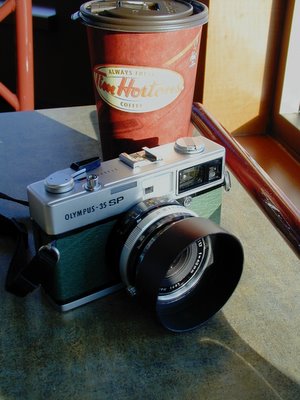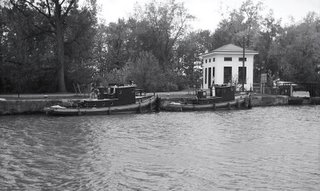As I wrote earlier, the Bialetti Brikka 2-cup had to be ordered from Italy. It ordered May 22, was shipped May 29 and the first delivery attempt was June 4. Whoa, that's pretty fast for the actual delivery time. Not sure of the delay in actually shipping it out, but it's not of great concern.

No duty or taxes were assessed, which didn't particularly surprise me, but was certainly welcome.
The packing material was crumpled newspaper. Since the Brikka itself was in its retail box, this proved to be adequate but not ideal. Given the rough handling in transit, newspaper for packing material didn't give much protection; the retail box had a tear in it, which may be the result of less than ideal packing material. Without a sturdy inner box, the Brikka itself might have been marred if not damaged.

The instruction leaflet is packed in the box. Opening up the lid (note the lid has a window in it, something I was not expecting in the 2-cup version,) you find the water measuring cup, a notice tag and a very small quick guide to the use of the Brikka.
While this quick guide has a cute format, what caught my eye was under the "Absolutely Don't Forget" heading. Keep the lid open? That certainly isn't intuitive, but when you follow this guidline you see there isn't any danger of hot, black liquid shooting out and inflicting 2nd degree burns on your face. So this begs the question, why the window in the lid? Granted you need to close the lid when you pour the coffee, but at that point the see-through window doesn't seem to have much utility. Any ideas?
After pouring the correct amount of water into the boil pot, grinding some beans and loading them into the grounds filter, I screwed the receiving chamber onto the boil pot, placed the unit onto the stove and adjusted the flame to not extend beyond the circumferance of the pot. Now it was wait time. The instruction leaflet indicates prep time is 3-4 minutes. I didn't keep exact time, after all I was anxious plus focused on capturing creama production with the camera.

The only drawback so far is that amount of cafe produced will be enough for one person. When I have guests, this will be a problem, since the pot has to cool down before you unscrew the two parts. If only the 4-cup model made crema as well as the 2-cupper. Oh well, such are the laws of physics; but so far the results justify the choice. If Santa were to bring me a 4-cup model, I certainly could compare results...















